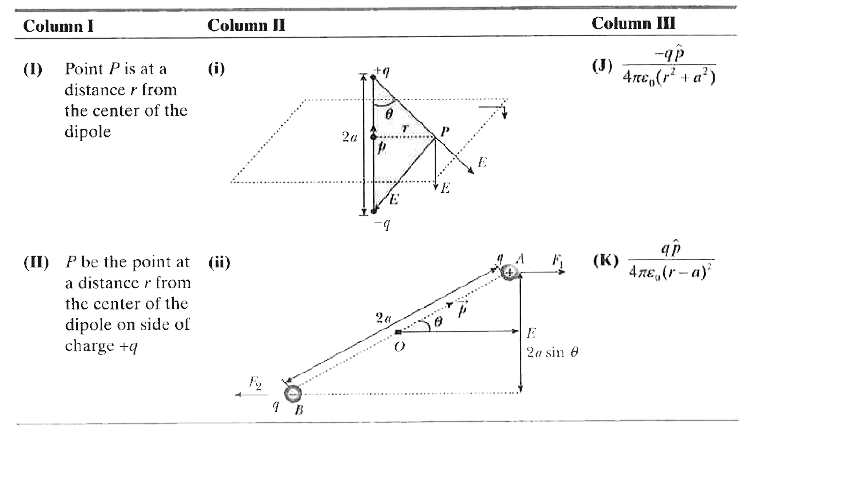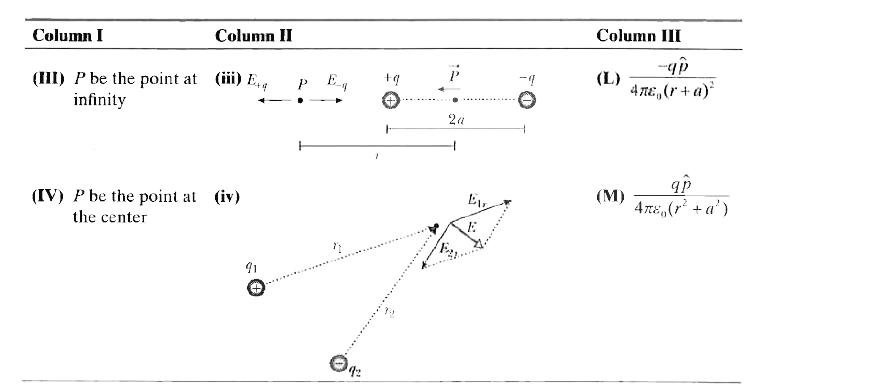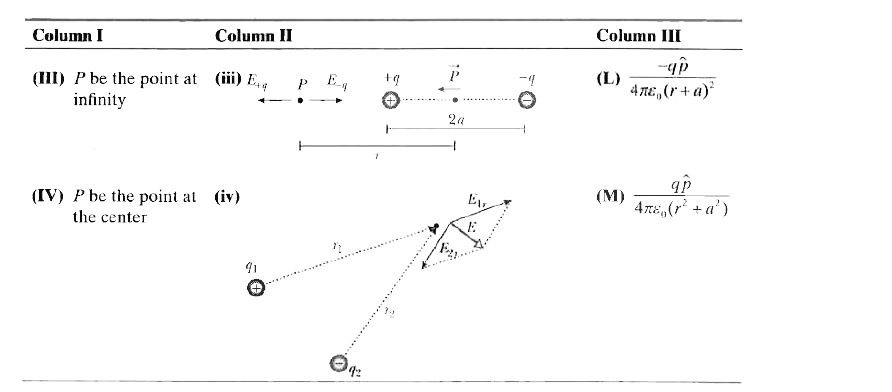Electric field due to an electric dipole is
spherically symmetric
cylindrical symmetric
asymmetric
none of the above
The correct Answer is:b
NA
Topper's Solved these Questions
- BOOK - PRADEEPCHAPTER - ELECTROSTATICSEXERCISE - FILL IN THE BLANKS8videos
ELECTROSTATICS
- BOOK - PRADEEPCHAPTER - ELECTROSTATICSEXERCISE - PROBLEMS FOR PRACTICE8videos
ELECTROSTATICS
- BOOK - PRADEEPCHAPTER - ELECTROSTATICSEXERCISE - VALUE BASED QUESTIONS7videos
ELECTROSTATICS
- BOOK - PRADEEPCHAPTER - ELECTRONIC DEVICESEXERCISE - Fill in the Blanks1videos
ELECTRONIC DEVICES
- BOOK - PRADEEPCHAPTER - MAGNETIC EFFECT OF CURRENT AND MAGNETISMEXERCISE - Competition Focus (Multiple Choice Questions)2videos
MAGNETIC EFFECT OF CURRENT AND MAGNETISM
Similar Questions
Knowledge Check
- Question 1 - Select One
The ratio of the electric field due to an electric dipole on its axis and on the perpendicular bisector of the dipole is -
A1:2B2:1C1:4D4:1 - Question 2 - Select One
The electric field due to an electric dipole at a distance r from its centre in axial position is E. If the dipole is rotated through an angle of 90∘ about its perpendicular axis, the electric field at the same point will be
AEBE4CE2D2E - Question 3 - Select One
The electric field due to an electric dipole at a distance r from its centre in axial position is E. If the dipole is rotated through an angle of 90∘ about its perpendicular axis, the electric field at the same point will be
AEBE/4CE/2D2E
What is the angle between the directions of electric field due to an electric dipole and its dipole moment at any :
(i) Axial p oint . (ii) Equatorial point .View SolutionCaleulate the electric field due to an electric dipole of length 10 cm having charges of 1μC at a point 12 cm from the centre of the dipole.
View SolutionDefine electric field. Write its SI units. Write the magnitude and direction of electric field due to an electric dipole of length '2a' at the mid-point of the line joining the two charges.
View SolutionAn electric dipole is the combination of two equal and opposite charges q and -q, respectively, separated by distance 2a. There are different points where we can find electric field due to the electric dipole. In the given table, column 1 shows different positions of point where we have to find electric field due to dipole, column 2 shows the figure of dipole with different positions of point where we have to find the electric field and column 3 shows the value or final formula of the electric field of different positions of the point.
When point P lies on the equatorial plan of the electric dipole, electric field due to -q is ?

 View Solution
View SolutionAn electric dipole is the combination of two equal and opposite charges q and -q, respectively, separated by distance 2a. There are different points where we can find electric field due to the electric dipole. In the given table, column 1 shows different positions of point where we have to find electric field due to dipole, column 2 shows the figure of dipole with different positions of point where we have to find the electric field and column 3 shows the value or final formula of the electric field of different positions of the point.
when point P lies on the equatorial plane of the electric dipole, electric field due to +q is ?

 View Solution
View Solution

